| |
|
|
Terminology:
Agenesis/aplasia:
complete absence of tissue or organ; may be uniform
or segmental.
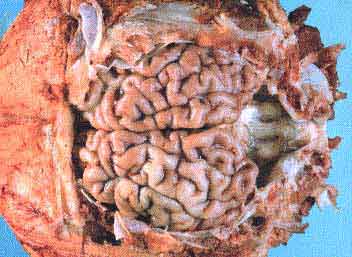
Calf - cerebellar aplasia
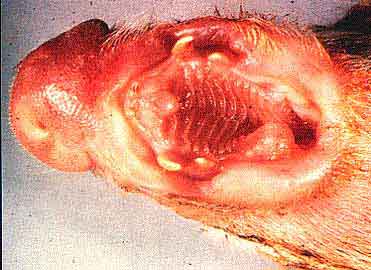
Pig - agnathia
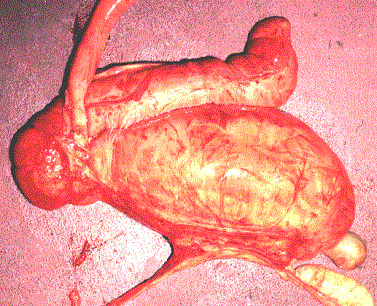
Foal - Segmental aplasia of large colon
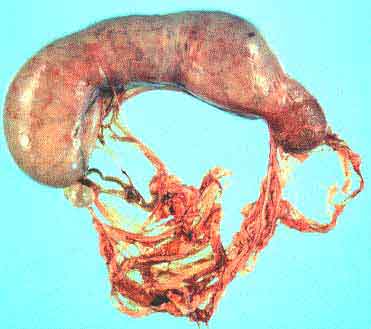
Dog - segmental aplasia of uterine horn
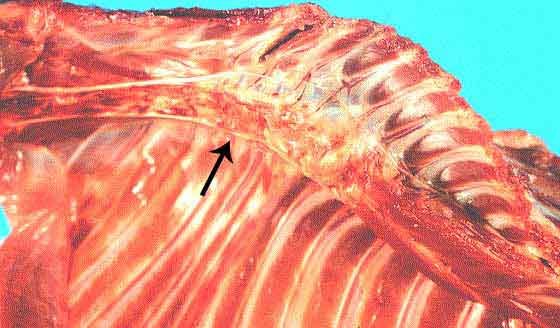
Dog - hemiverterbrae
Atresia:
failure to develop a normal opening to a tubular organ.
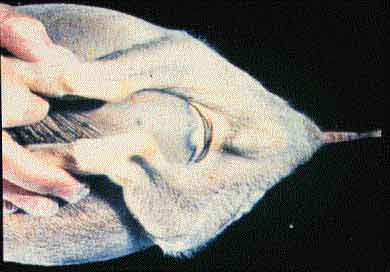
Pig - atresia ani
Hypoplasia:
incomplete growth; never reaching normal size.
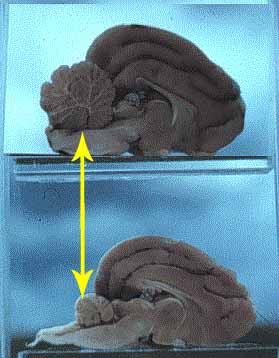
Cat - compare normal (top), with hypoplastic (bottom)
cerebellum
Atrophy:
decreased tissue mass after achieving normal growth:
due to decreased cell number and/or size.
Example: disuse atrophy
Hypertrophy:
increased tissue mass due to increase in individual
cell size.
Example: compensatory hypertrophy
Hyperplasia:
increased tissue size due to increase in cell number.
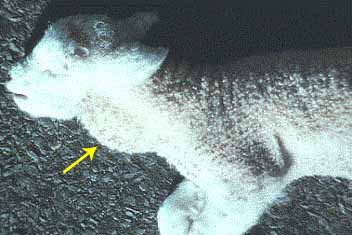
Lamb - goitre
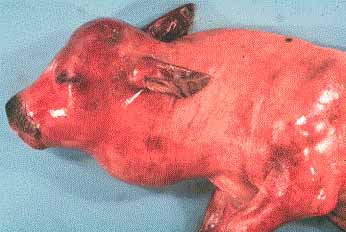
Calf - goitre
Dysplasia:
transformation of cellular orientation and/or uniformity
(size, shape, staining characteristics). It may be preneoplastic and
reversible.
Example: epiphyseal dysplasia of rickets
Metaplasia:
transformation of a fully differentiated normal adult
tissue type into a related adult tissue type.
Example: squamous metaplasia of glandular epithelium
Anomalies/Malformations:
rarely singular, and often occur as recognizable syndromes.
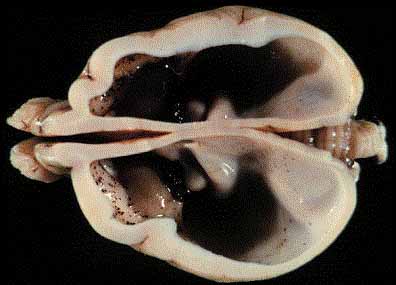
Congenital hydrocephalus - thought to be associated
with malformation of the mesencephalic aqueduct.
|
|










